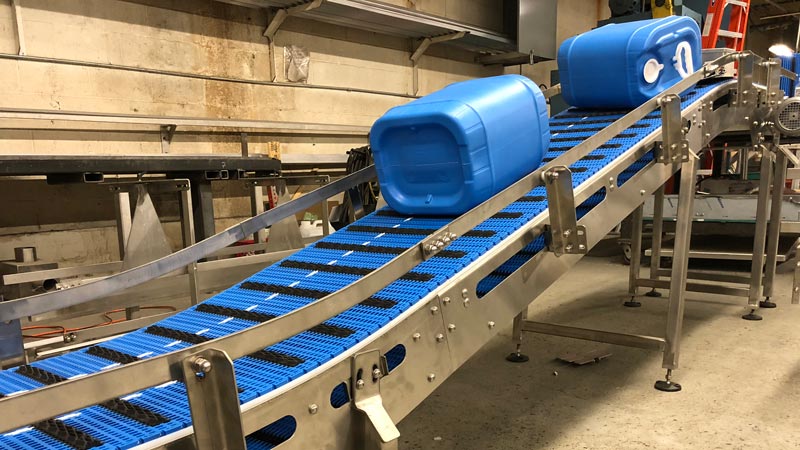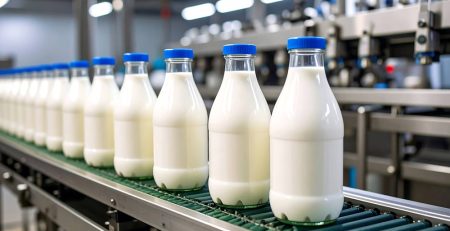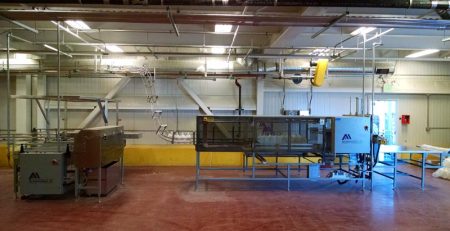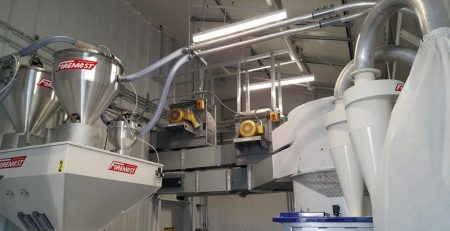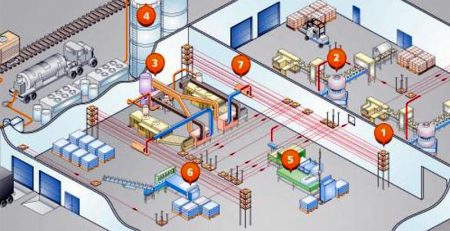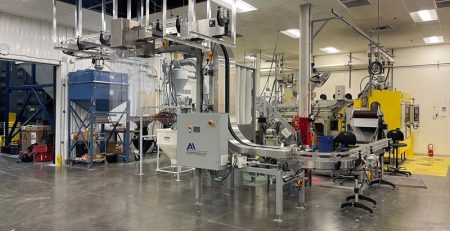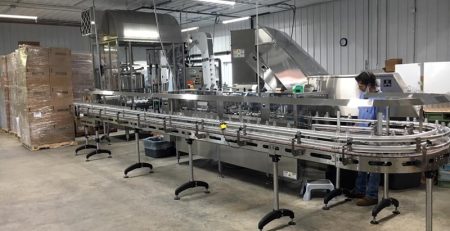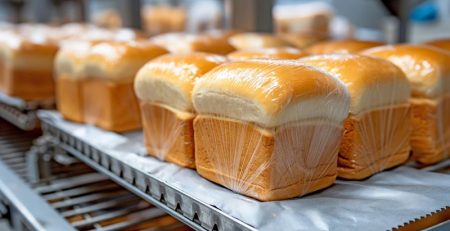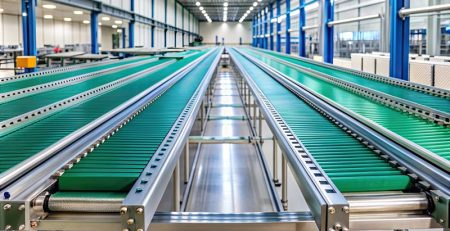Conveyor systems are the heartbeat of automated packaging and material handling environments. From bottles and cans to cartons and containers, virtually every item that rolls through a production facility at some point travels along a conveyor. But not all conveyors are built the same. Depending on the product type, line speed, layout, and handling needs, different conveyor technologies offer distinct advantages.
Here’s a closer look at five key types of conveyors that play a critical role in modern production lines—and what makes each of them uniquely effective.
1. Cable Conveyors
Cable conveyors offer a specialized solution for gentle, continuous movement of containers through various stages of production. These systems utilize a flexible stainless-steel cable embedded with pucks or discs to guide and carry products through enclosed tubing or track. The result is a smooth, consistent flow with minimal back pressure or container-to-container contact.
How They Work: Cable conveyors move products by suspending or resting them on pucks that glide along a cable loop. The low-friction design allows for flexible layout configurations, including vertical lifts, long runs, and tight curves. Because the product remains stable and separated during transport, there’s significantly less risk of jams, tipping, or label scuffing.
Common Applications:
- Empty plastic bottle conveyance
- PET and HDPE containers
- Lightweight packaging with delicate labeling
Advantages:
- Gentle product handling with reduced contact
- Compact, enclosed layout options
- Lower maintenance due to minimal moving parts
These conveyors are particularly effective when handling containers that are prone to tipping or damage, such as empty bottles or delicate packaging. Their enclosed system also helps maintain a cleaner environment and reduce contamination risk.
2. Table Top Conveyors
A mainstay in the world of high-speed packaging and bottling, table top conveyors feature a flat, continuous chain or belt that runs along a supporting track or table-like surface. These systems are ideal for transporting products in a stable, single-file manner through filling, labeling, capping, or packaging stations.
How They Work: Table top conveyors typically consist of plastic or stainless-steel slat chains that are linked together to form a belt. The belt rides along a metal or UHMW-constructed table, providing both support and low-friction movement. Curved sections can be incorporated to fit around equipment or facility structures.
Common Applications:
- Bottling lines
- Food and beverage packaging
- Pharmaceutical production
- Personal care and cosmetic products
Advantages:
- Smooth and consistent product flow
- Easily configurable for turns, inclines, and declines
- Compatible with accumulation systems and line controls
Table top conveyors are known for their modularity and ease of integration with other components on the line. Whether it’s carrying filled bottles or shrink-wrapped cartons, they provide the structure and stability needed for high-efficiency production.
3. Bottle Conveyors
Bottle conveyors are engineered specifically for the unique challenges of transporting bottles—whether empty, full, capped, or uncapped. These systems are designed to maintain bottle stability while ensuring proper orientation and spacing to prevent jams and breakage.
How They Work: Bottle conveyors come in several formats, including standard belt, chain, or rail-guided systems. Adjustable guide rails help center and stabilize the bottles as they move along the conveyor, accommodating various sizes and shapes.
Common Applications:
- Beverage bottling facilities
- Water, juice, and soft drink production
- Personal care products (e.g., shampoo, lotion)
- Pharmaceuticals
Advantages:
- Designed for consistent spacing and smooth transitions
- Can be integrated with rinsers, fillers, cappers, and labelers
- Handles bottles of different materials (glass, plastic, aluminum)
In high-speed environments, proper bottle handling is critical to and avoiding costly disruptions. Bottle conveyors are built to meet these needs, ensuring bottles are transported securely from one process to the next.
“By understanding the characteristics and advantages of different conveyor types, operations managers and engineers can design systems that move more than just products—they move entire processes forward.”
4. Mattop Conveyors
Mattop conveyors, also known as modular belt conveyors, offer a robust and flexible option for transporting a variety of product types across flat or inclined surfaces. These systems use interlocking plastic segments to form a durable, chain-like belt that provides excellent traction and load capacity.
How They Work: Each belt segment in a mattop conveyor connects via hinge rods, allowing the belt to articulate over curves or inclines while remaining structurally stable. The wide surface area supports both small and bulky items, and the open design can accommodate drainage or airflow if required.
Common Applications:
- Food and beverage packaging
- Frozen or sealed goods
- Containers, cartons, and trays
- Washdown environments
Advantages:
- Modular, low-maintenance construction
- Resistant to corrosion, moisture, and wear
- Capable of handling heavier or oddly shaped loads
Mattop conveyors excel in scenarios where durability, sanitation, and adaptability are key. Their rugged belts make them ideal for facilities that deal with heavy loads, repeated washdowns, or temperature variations.
5. Side Grip Conveyors
Side grip conveyors are used to gently grasp and elevate, lower, or transfer products using opposed gripper chains or belts. These systems are often used to move containers between heights or shift them from one line to another without tipping or spilling.
How They Work: Products are securely held between two parallel gripping surfaces—usually padded chains or belts—that run in sync to lift or carry items vertically or across a gap. This method of handling is ideal for delicate or unstable items that can’t be conveyed using flat-belt systems.
Common Applications:
- Vertical bottle elevation or lowering
- Transferring containers between conveyors
- Inverting or rotating products for inspection or coding
Advantages:
- Precise control of product orientation
- Smooth vertical transitions without changing container stability
- Can be configured for compact footprints
Side grip conveyors are especially useful in facilities with space constraints or production lines that require elevation changes without the complexity of spiral or incline conveyors. Their ability to maintain product control during transitions makes them a popular solution for bottling and packaging applications.
Conveyor Systems by Automation Ideas
Selecting the right conveyor system is crucial for maximizing efficiency, minimizing downtime, and protecting product quality. Each type of conveyor—whether it’s a cable conveyor for delicate PET bottles, a table top conveyor for seamless high-speed packaging, or a side grip system for vertical transitions—offers unique benefits based on the product and application.
By understanding the characteristics and advantages of different conveyor types, operations managers and engineers can design systems that move more than just products—they move entire processes forward.
If you are interested in our custom conveyor solutions, or would like to learn more about any of our automation equipment, please contact us here or give our dedicated support team a call at (616) 874-4041.

